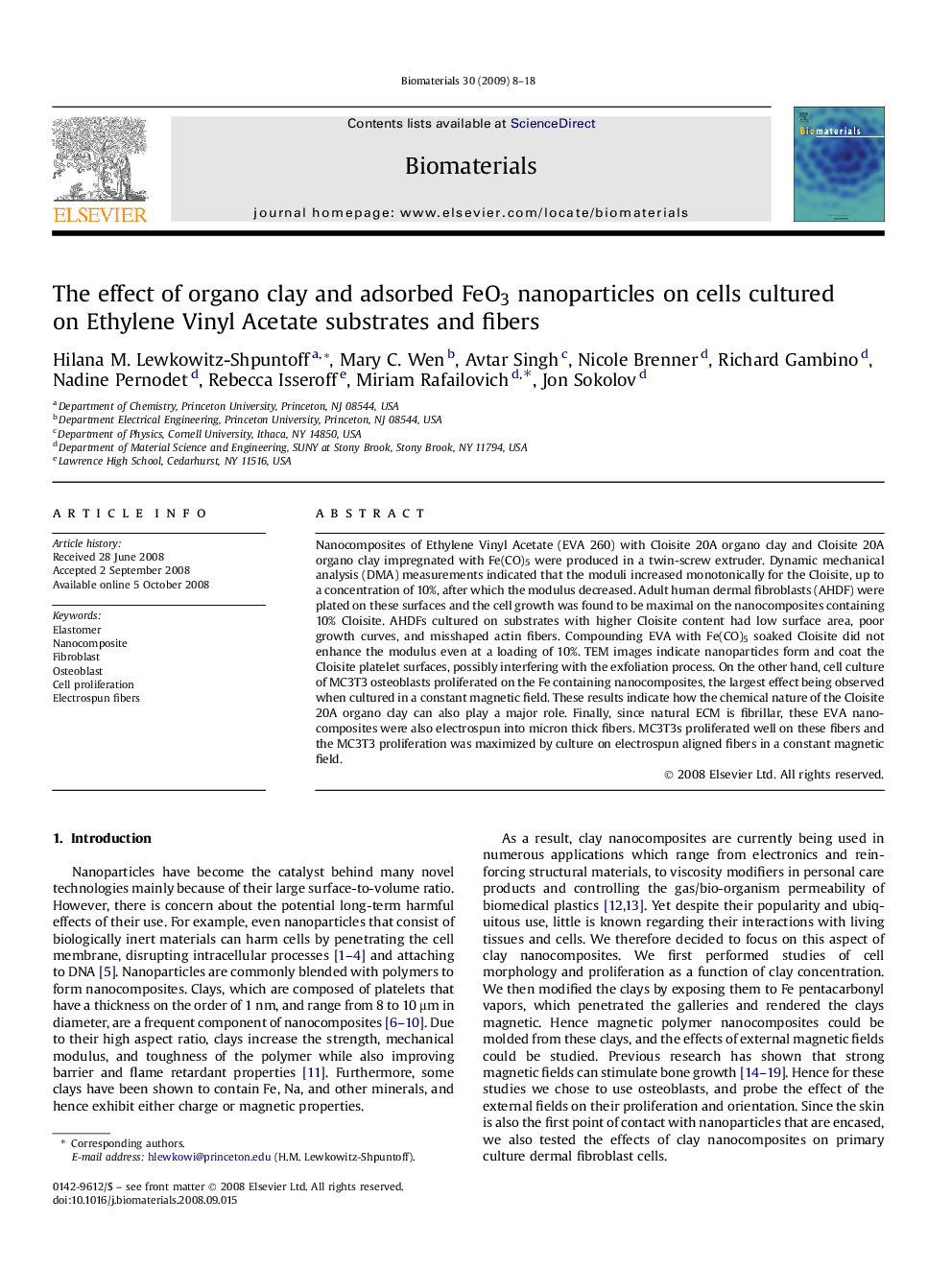| Article ID | Journal | Published Year | Pages | File Type |
|---|---|---|---|---|
| 9519 | Biomaterials | 2009 | 11 Pages |
Nanocomposites of Ethylene Vinyl Acetate (EVA 260) with Cloisite 20A organo clay and Cloisite 20A organo clay impregnated with Fe(CO)5 were produced in a twin-screw extruder. Dynamic mechanical analysis (DMA) measurements indicated that the moduli increased monotonically for the Cloisite, up to a concentration of 10%, after which the modulus decreased. Adult human dermal fibroblasts (AHDF) were plated on these surfaces and the cell growth was found to be maximal on the nanocomposites containing 10% Cloisite. AHDFs cultured on substrates with higher Cloisite content had low surface area, poor growth curves, and misshaped actin fibers. Compounding EVA with Fe(CO)5 soaked Cloisite did not enhance the modulus even at a loading of 10%. TEM images indicate nanoparticles form and coat the Cloisite platelet surfaces, possibly interfering with the exfoliation process. On the other hand, cell culture of MC3T3 osteoblasts proliferated on the Fe containing nanocomposites, the largest effect being observed when cultured in a constant magnetic field. These results indicate how the chemical nature of the Cloisite 20A organo clay can also play a major role. Finally, since natural ECM is fibrillar, these EVA nanocomposites were also electrospun into micron thick fibers. MC3T3s proliferated well on these fibers and the MC3T3 proliferation was maximized by culture on electrospun aligned fibers in a constant magnetic field.
